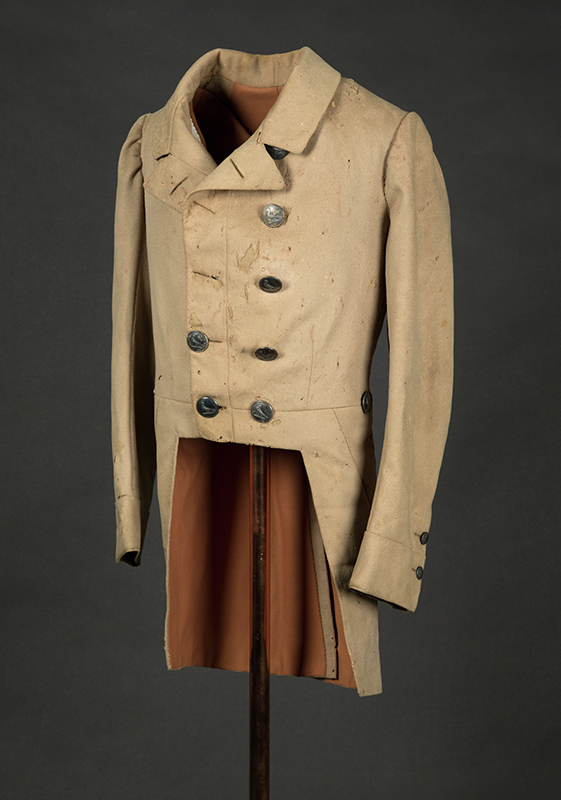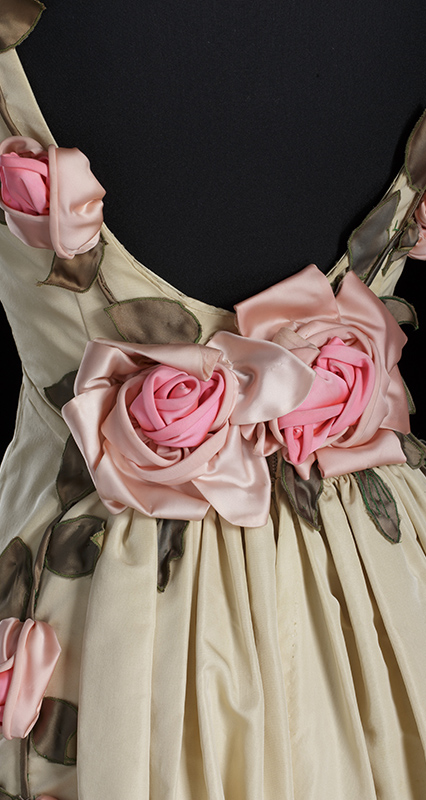Black Designers in American Fashion: Making Space for Dress History Across Disciplines
by Kate Burnett Budzyn
Black Designers in American Fashion is, simply put, one of the most important recent publications in historic dress scholarship. Released this past summer by Bloomsbury and edited by Elizabeth Way, Assistant Curator of Costume at The Museum at FIT, the book assembles contributions by clothing scholars from across the country to offer a compendium of short histories that demonstrate the centrality of Black makers and creators within an industry that has largely failed to recognize their authorship.
Figure 1. Brooks Brothers. Livery Coat, c. 1860. Wool, linen, cotton, and metal. The Historic New Orleans Collection, 2013.0115.1.
Figure 2. An elegantly dressed woman of the 1870s demonstrates the close custom fit that dressmakers of the mid- to late 19th century achieved through high-level skills that were often passed down through Black matrilines. “Studio portrait of woman wearing hat and gloves and dress with bustle,” c. 1875. Schomburg Center for Research in Black Culture, Photographs and Prints Division, The New York Public Library.
The book’s 12 essays are divided into broad periods in the evolution of Black fashion design, beginning with the largely anonymous histories of enslaved clothing makers and self-fashioners during the 18th and early 19th centuries and ending with essays devoted to a few of the design superstars of the late 20th century, including Willi Smith and Patrick Kelly. Standout contributions include Jonathan Michael Square’s “Slavery’s Warp, Freedom’s Weft,” a survey of the importance of Black matrilineal sewing and dressmaking traditions in laying the groundwork for the success of later designers, and Ariele Elia’s piece on Dapper Dan (figure 3), the famous Harlem-based streetwear designer whose use of bootleg luxury logo-patterned leathers and fabrics in the early 1980s initiated a decades-long trend.
A theme of clothing as a site of space-making for Black Americans runs throughout the collection of essays. Enslaved people were often issued insufficient supplies of ill-fitting garments made of coarse fabrics, but through the use of sewing skills, creative adaptation, and assemblage, many people fashioned individualized styles that allowed them to claim identity and shape their daily physical experience. As Katie Knowles writes in her contribution, “The Fabric of Fast Fashion,” this practice of self-fashioning in the face of severely limited material offerings served as the precursor to ready-to-wear and fast fashion systems that would come to dominate the American clothing system: “Understanding how enslaved people designed space for their bodies through clothing centers them in this historical moment and within the larger history of the modern American fashion system.”
Black Designers includes dozens of images of clothing artifacts that attest to fashion’s role in creating and envisioning spaces of Black freedom within a nation founded on race-based slavery. Among these are a mid-19th-century Brooks Brothers livery jacket worn by a man enslaved in Louisiana; the yellow rayon wrap dress that Rosa Parks, who worked as a seamstress, was in the midst of creating on the day she refused to give up her bus seat; and a few of the stunningly avant-garde Afrofuturist jewelry designs of Art Smith. The contributors offer insightful introductions to these understudied objects and their creators, laying a long overdue foundation for further scholarship.
Figure 4. Ivory silk dress decorated with handmade roses. Ann Lowe, 1966–1967. Collection of the Smithsonian National Museum of African American History and Culture. Gift of the Black Fashion Museum founded by Lois K. Alexander-Lane.
Indeed, as Way notes in her introduction, many of the designers treated in the book have not yet received significant scholarly attention. This is shocking given the magnitude of their contributions to fashion, to Black identity, and to American identity writ large. Many of the book’s contributors explicitly make a case for considering these makers’ importance within the full scope of history rather than limiting them to fashion studies. In recent years, major decorative arts institutions and historic house collections have recognized the power of clothing exhibits to engage broad audiences. The Cooper Hewitt’s recent Contemporary Muslim Fashions brought clothing designs from across the globe to the attention of decorative arts enthusiasts, as did Winterthur’s massively successful Costumes of Downton Abbey and Costuming the Crown exhibitions. Way herself will serve as a guest curator for a 2023 exhibition at Winterthur on the designer Ann Lowe (figures 4 and 5), whose erudite Mid-Century gowns catered to the social elite, including Jackie Kennedy and Marjorie Merriweather Post, and whose work was first given significant scholarly attention by the late decorative arts curator and researcher Margaret Powell. In establishing Black clothing creation as foundational American history, Black Designers in American Fashion offers an undeniable call to scholars and enthusiasts across fields—including the decorative arts—to recognize the role that dress plays in documenting those whose lives and works have too long been neglected.
Kate Burnett Budzyn is a contributing writer for The Decorative Arts Trust Bulletin. She researches historic clothing and textiles and is the book review editor at Winterthur Portfolio.
About The Decorative Arts Trust Bulletin
Formerly known as the "blog,” the Bulletin features new research and scholarship, travelogues, book reviews, and museum and gallery exhibitions. The Bulletin complements The Magazine of the Decorative Arts Trust, our biannual members publication.












